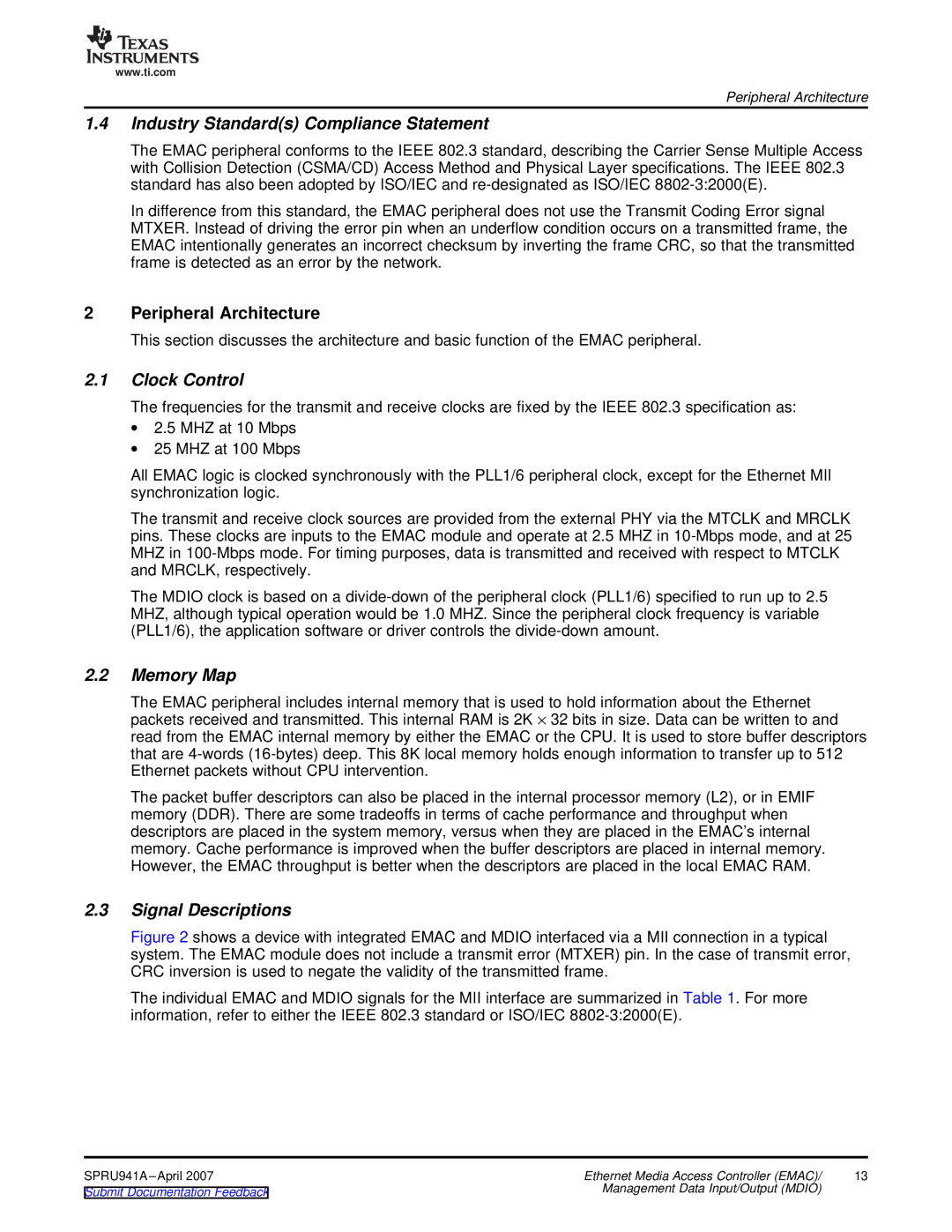
www.ti.com
Peripheral Architecture
1.4Industry Standard(s) Compliance Statement
The EMAC peripheral conforms to the IEEE 802.3 standard, describing the Carrier Sense Multiple Access with Collision Detection (CSMA/CD) Access Method and Physical Layer specifications. The IEEE 802.3 standard has also been adopted by ISO/IEC and
In difference from this standard, the EMAC peripheral does not use the Transmit Coding Error signal MTXER. Instead of driving the error pin when an underflow condition occurs on a transmitted frame, the EMAC intentionally generates an incorrect checksum by inverting the frame CRC, so that the transmitted frame is detected as an error by the network.
2Peripheral Architecture
This section discusses the architecture and basic function of the EMAC peripheral.
2.1Clock Control
The frequencies for the transmit and receive clocks are fixed by the IEEE 802.3 specification as:
∙2.5 MHZ at 10 Mbps
∙25 MHZ at 100 Mbps
All EMAC logic is clocked synchronously with the PLL1/6 peripheral clock, except for the Ethernet MII synchronization logic.
The transmit and receive clock sources are provided from the external PHY via the MTCLK and MRCLK pins. These clocks are inputs to the EMAC module and operate at 2.5 MHZ in
The MDIO clock is based on a
2.2Memory Map
The EMAC peripheral includes internal memory that is used to hold information about the Ethernet packets received and transmitted. This internal RAM is 2K × 32 bits in size. Data can be written to and read from the EMAC internal memory by either the EMAC or the CPU. It is used to store buffer descriptors that are
The packet buffer descriptors can also be placed in the internal processor memory (L2), or in EMIF memory (DDR). There are some tradeoffs in terms of cache performance and throughput when descriptors are placed in the system memory, versus when they are placed in the EMAC’s internal memory. Cache performance is improved when the buffer descriptors are placed in internal memory. However, the EMAC throughput is better when the descriptors are placed in the local EMAC RAM.
2.3Signal Descriptions
Figure 2 shows a device with integrated EMAC and MDIO interfaced via a MII connection in a typical system. The EMAC module does not include a transmit error (MTXER) pin. In the case of transmit error, CRC inversion is used to negate the validity of the transmitted frame.
The individual EMAC and MDIO signals for the MII interface are summarized in Table 1. For more information, refer to either the IEEE 802.3 standard or ISO/IEC 8802-3:2000(E).
SPRU941A
Submit Documentation Feedback | Management Data Input/Output (MDIO) |
|
